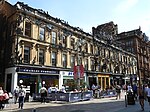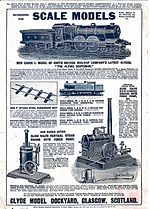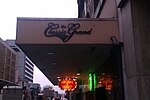The Lighthouse, Glasgow
1999 establishments in ScotlandArchitecture in ScotlandArchitecture museums in the United KingdomArt Nouveau architecture in GlasgowArt Nouveau commercial buildings ... and 8 more
Art museums established in 1999Category A listed buildings in GlasgowCharles Rennie Mackintosh buildingsCommercial buildings completed in 1895Culture in GlasgowMuseums in GlasgowScottish designUse British English from October 2017

The Lighthouse in Glasgow is Scotland's Centre for Design and Architecture. It was opened as part of Glasgow's status as UK City of Architecture and Design in 1999. The Lighthouse is the renamed conversion of the former offices of the Glasgow Herald newspaper. Completed in 1895, it was designed by the architect Charles Rennie Mackintosh. The centre's vision is to develop the links between design, architecture, and the creative industries, seeing these as interconnected social, educational, economic and cultural issues of concern to everyone.
Excerpt from the Wikipedia article The Lighthouse, Glasgow (License: CC BY-SA 3.0, Authors, Images).The Lighthouse, Glasgow
Mitchell Lane, Glasgow Blythswood Hill
Geographical coordinates (GPS) Address Website External links Nearby Places Show on map
Geographical coordinates (GPS)
| Latitude | Longitude |
|---|---|
| N 55.8597 ° | E -4.2555 ° |
Address
The Lighthouse
Mitchell Lane 11
G1 3NU Glasgow, Blythswood Hill
Scotland, United Kingdom
Open on Google Maps









